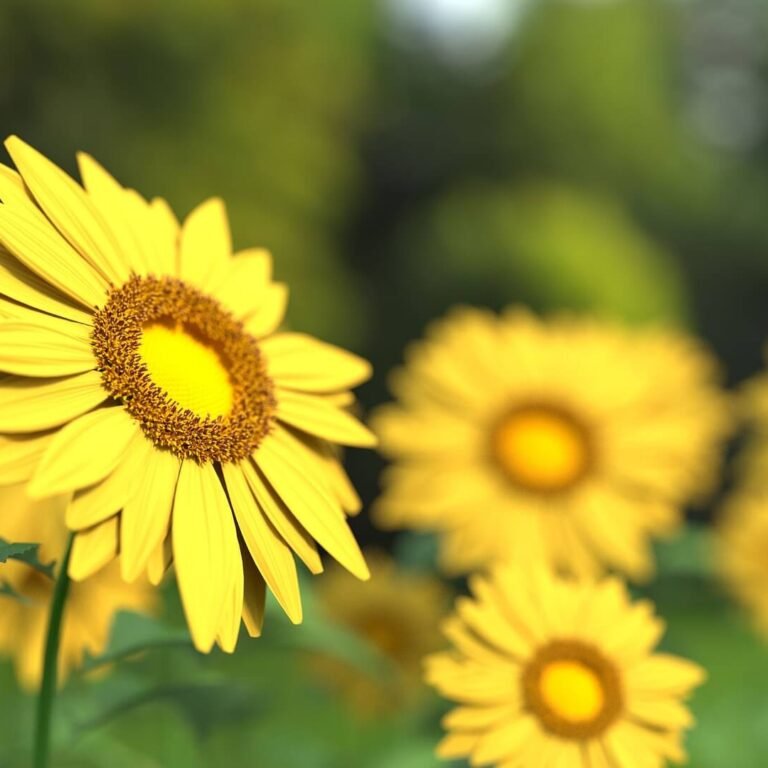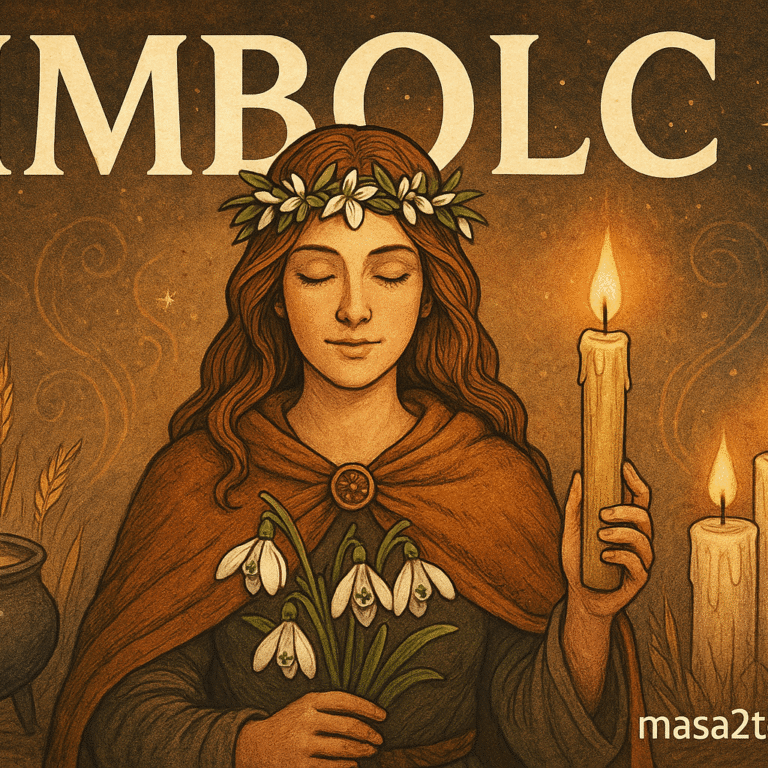Wheel of the Year: Have you ever noticed how your mood changes with the seasons? Maybe you feel sleepy in winter but energetic in spring.
There’s an ancient system that explains these feelings and helps people live in harmony with nature’s rhythm. It’s called the wheel of the year, and it might change how you see the world around you.
The wheel of the year is more than just a calendar. It’s a way of understanding life that has helped people for thousands of years.
This system teaches us when to plant, when to harvest, when to rest, and when to celebrate. Even today, many people use the wheel of the year to make their lives more balanced and meaningful.
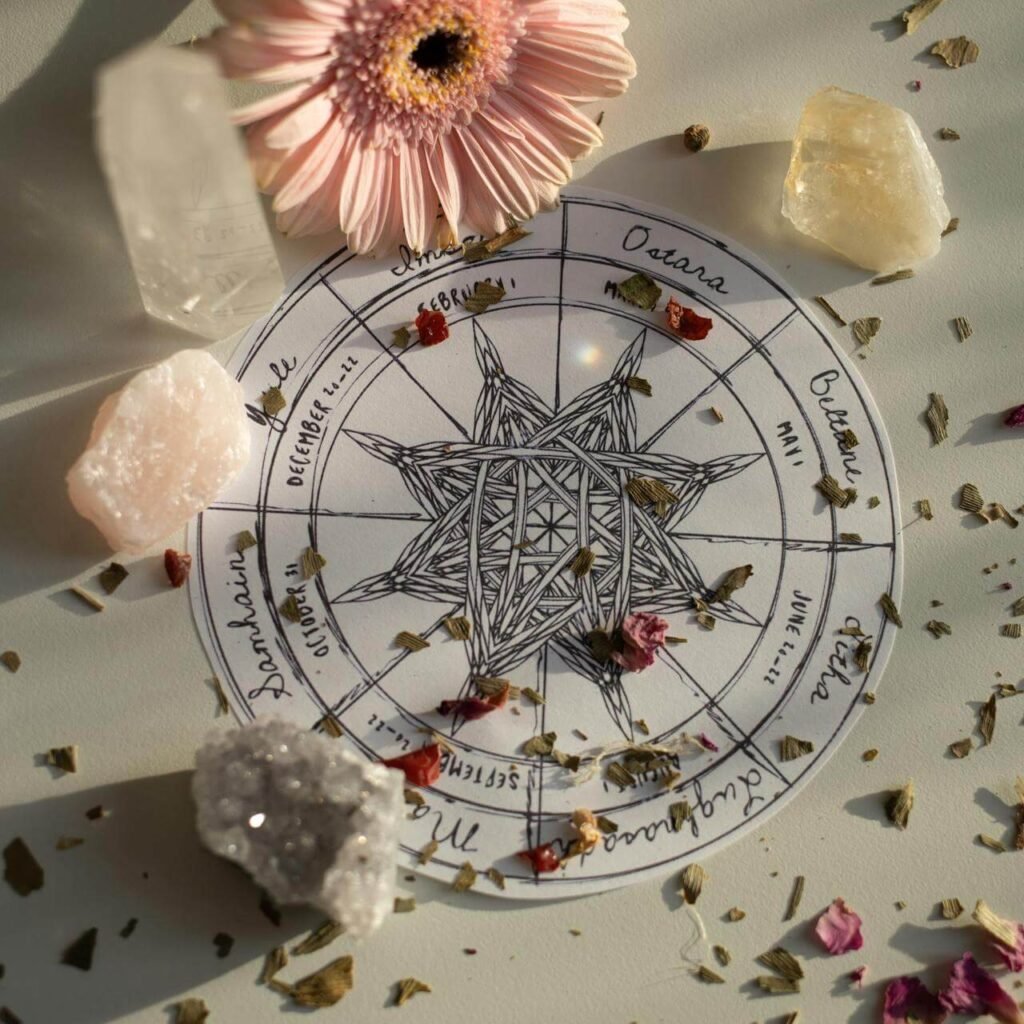
Origins and History of the Wheel of the Year
Long ago, people didn’t have clocks or modern calendars. They watched the sun, moon, and stars to know what time it was and what season was coming. The wheel of the year grew from this ancient wisdom.
Celtic people in Ireland, Scotland, and Wales were some of the first to create this system. They needed to know exactly when to do important farm work. Plant too early, and frost might kill your crops. Harvest too late, and winter storms could destroy everything.
The wheel of the year helped these ancient people survive and thrive. They noticed that the sun’s path across the sky changed throughout the year. In summer, the sun stayed up longer and climbed higher. In winter, it barely showed itself and stayed low in the sky.
These observations became the foundation of the wheel of the year. People created eight special days that marked the most important changes in the sun’s behavior. Four of these days were the biggest changes – the longest day, shortest day, and the two days when light and dark were equal.
Also Read: Pagan Holidays: Your Complete Guide to Celebrating the Wheel of the Year
Germanic tribes also contributed to the wheel of the year. They had their own festivals for planting season, harvest time, and the darkest part of winter. When different cultures mixed, their celebrations combined to create the system we know today.
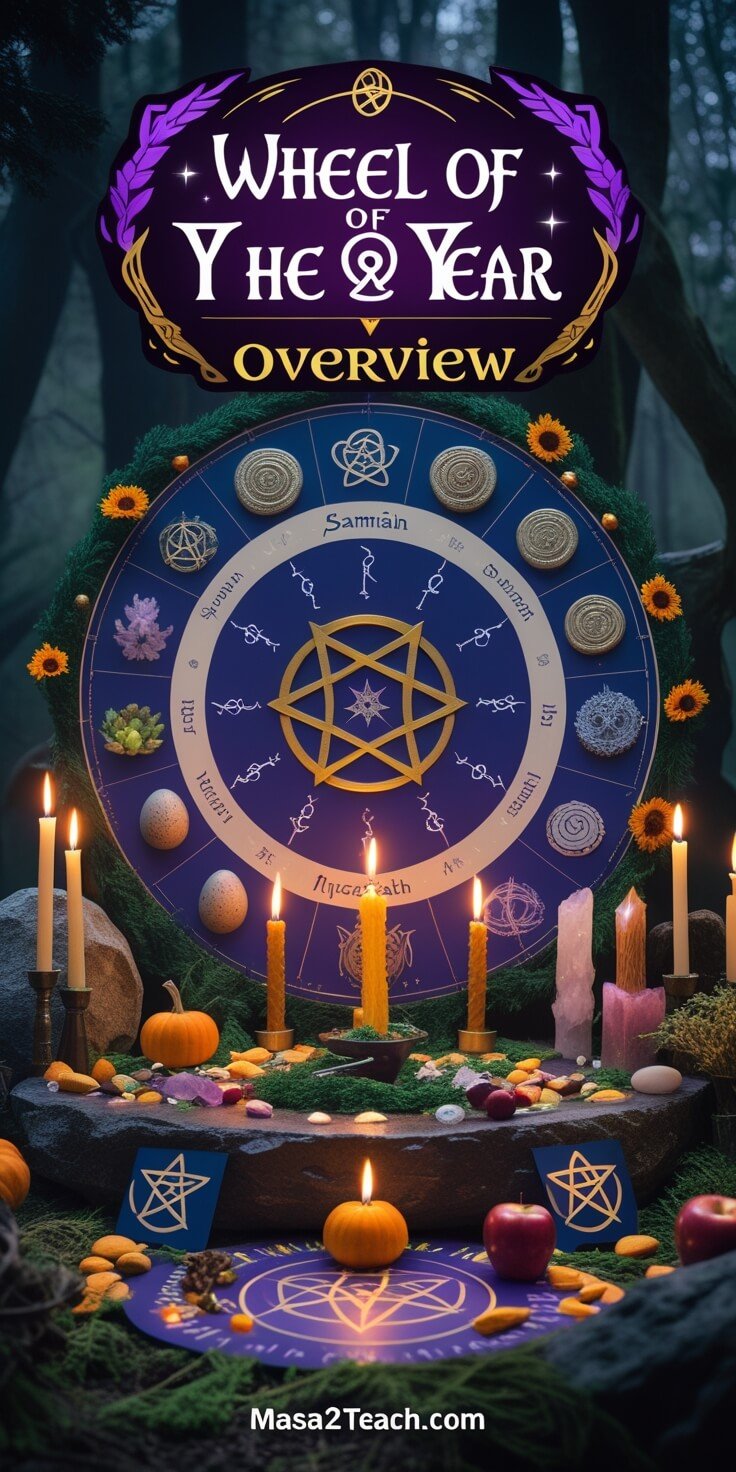
How the Wheel of the Year Actually Works
Think of the wheel of the year like a clock, but instead of hours, it shows seasons. The wheel has eight points, like the eight main directions on a compass. Each point represents about six to seven weeks of the year.
The wheel of the year starts in late October with the Celtic New Year. From there, it moves through winter’s rest, spring’s awakening, summer’s abundance, and autumn’s harvest. Each section teaches us something different about how to live well.
Unlike our regular calendar that counts days, the wheel of the year follows energy patterns. It shows us when nature is most active and when it’s resting. It tells us when animals mate, when plants grow fastest, and when everything prepares for winter.
This system works anywhere on Earth, but the timing might be different. In Australia, their wheel of the year is flipped because their seasons are opposite to ours. The important thing isn’t the exact dates, but understanding the pattern of rest and activity that nature follows.
The wheel of the year also connects to the moon’s cycles. Each season has about three full moons, and many people pay attention to both the solar wheel and lunar cycles for a complete understanding of natural timing.
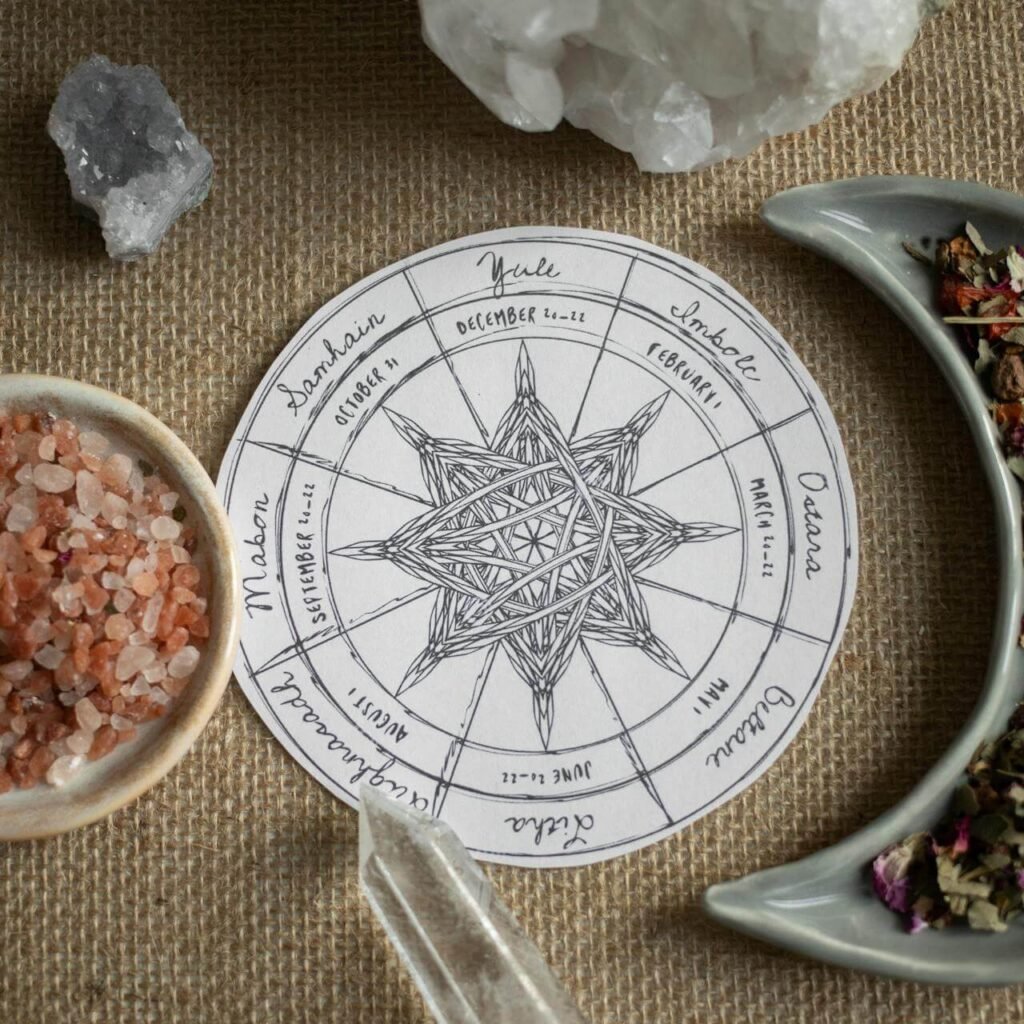
The Eight Stations: More Than Just Dates
Samhain: When the Veil is Thin (Late October)
The wheel of the year begins at Samhain, which you probably know as Halloween. But this celebration is much deeper than costumes and candy. Ancient people believed this was when the barrier between our world and the spirit world became thinnest.
This isn’t scary – it’s actually beautiful. Samhain teaches us that death is just another part of life, like winter following autumn. Families would honor relatives who had died, sharing stories and keeping their memory alive.
Samhain also marks the time when farmers brought their animals closer to home and stored food for winter. Everything was about preparation and remembering. The wheel of the year shows us this is when we should think about what we’ve learned and what we need to let go of.
Winter Solstice: The Light Returns (Late December)
The winter solstice happens on the darkest day of the year, but it’s actually a celebration of hope. From this day forward, each day will have a little more light until summer comes again.
Ancient people lit huge fires on this day to encourage the sun to come back. They decorated with evergreen plants because these stayed alive even in winter’s hardest days. Many of our Christmas traditions actually come from these ancient wheel of the year celebrations.
The winter solstice teaches us that even in our darkest times, light will return. It’s a time for rest, reflection, and spending time with people we love. The wheel of the year reminds us that darkness isn’t bad – it’s necessary for rest and renewal.
Imbolc: Stirring to Life (Early February)
Even though winter isn’t over, Imbolc celebrates the first tiny signs that spring is coming. Days are getting longer, and some brave plants start pushing through the snow.
The wheel of the year teaches us that Imbolc is about potential and preparation. It’s like when you get a great idea but haven’t started working on it yet. The energy is building, but the big changes haven’t happened yet.
Ancient people used this time to plan their gardens, prepare tools, and get ready for the busy season ahead. They also focused on creativity and learning new skills during the quiet winter months.
Spring Equinox: Perfect Balance (Late March)
The spring equinox is when day and night are exactly equal in length. After this point, daylight will be longer than darkness until autumn returns. The wheel of the year shows us this is a time of perfect balance and new beginnings.
Everything in nature starts waking up during the spring equinox. Animals have babies, plants start growing, and the earth comes alive after winter’s sleep. It’s the perfect time for starting new projects or making positive changes in your life.
The wheel of the year teaches us that balance is important but temporary. Life is always moving and changing, and the spring equinox reminds us to enjoy these perfect moments when they come.
Beltane: Life Force at Its Peak (Early May)
Beltane celebrates life energy at its most powerful. Everything is growing, blooming, and full of vitality. The wheel of the year shows us this is when nature celebrates its own creative power.
Ancient people lit bonfires and danced to celebrate this abundant energy. They made flower crowns, decorated with fresh green branches, and celebrated the joy of being alive. Beltane teaches us to embrace life’s pleasures and not be afraid of our own power.
This station of the wheel of the year is about creativity, passion, and community. It’s when people traditionally got married, started new businesses, and took big risks because they felt supported by nature’s abundant energy.
Summer Solstice: The Sun’s Greatest Power (Late June)
The summer solstice is the longest day of the year when the sun reaches its highest point. Everything in nature is at its peak – plants are tallest, flowers are brightest, and life is abundant everywhere.
But the wheel of the year also teaches us that this peak moment is bittersweet. Starting tomorrow, each day will have a little less light until winter returns. This reminds us to appreciate good times while they’re happening because nothing stays the same forever.
Ancient people gathered healing herbs on the summer solstice because plants were thought to be most powerful on this day. They also stayed up all night to honor the sun’s greatest moment and watch it set and rise on the longest day.
Lughnasadh: First Fruits (Early August)
Lughnasadh celebrates the first harvest when early crops like wheat and corn are ready to gather. The wheel of the year teaches us this is when we start to see the results of our spring planting and summer care.
This celebration is named after Lugh, an ancient god of skill and craftsmanship. People would show off their talents at fairs and competitions. It was a time to be proud of what you could do and share your skills with others.
The wheel of the year shows us that Lughnasadh is about recognizing our achievements and preparing for the main harvest still to come. It’s a preview of abundance that reminds us our hard work is paying off.
Autumn Equinox: Gratitude and Preparation (Late September)
The autumn equinox brings another moment of perfect balance when day and night are equal again. After this, darkness will be longer than light until spring returns. The wheel of the year teaches us this is the main harvest time when we gather and preserve food for winter.
This celebration is all about gratitude for the earth’s gifts and appreciation for everything we’ve received. Ancient people would feast on the harvest, share with neighbors, and make sure everyone had enough food stored for winter.
The wheel of the year shows us that the autumn equinox is also about wisdom and reflection. As nature prepares to rest, we can think about what we’ve learned and how we’ve grown throughout the year.
Modern Science Meets Ancient Wisdom
Scientists today understand why the wheel of the year affects people so strongly. Our bodies have internal clocks that respond to changes in daylight. When days get shorter, our brains make more melatonin, which makes us sleepy. When days get longer, we naturally feel more energetic.
The wheel of the year predicted what scientists now call Seasonal Affective Disorder. This is when people feel sad or tired during winter months because of less sunlight. Ancient people dealt with this by creating celebrations that brought light, warmth, and community during the darkest times.
Research also shows that our immune systems, sleep patterns, and even creativity change with the seasons. The wheel of the year teaches us to work with these natural rhythms instead of fighting them.
Modern farmers still use principles from the wheel of the year. They know that certain crops grow better at specific times and that animals naturally mate and give birth according to seasonal patterns. Even though we have technology now, nature’s rhythms still matter.
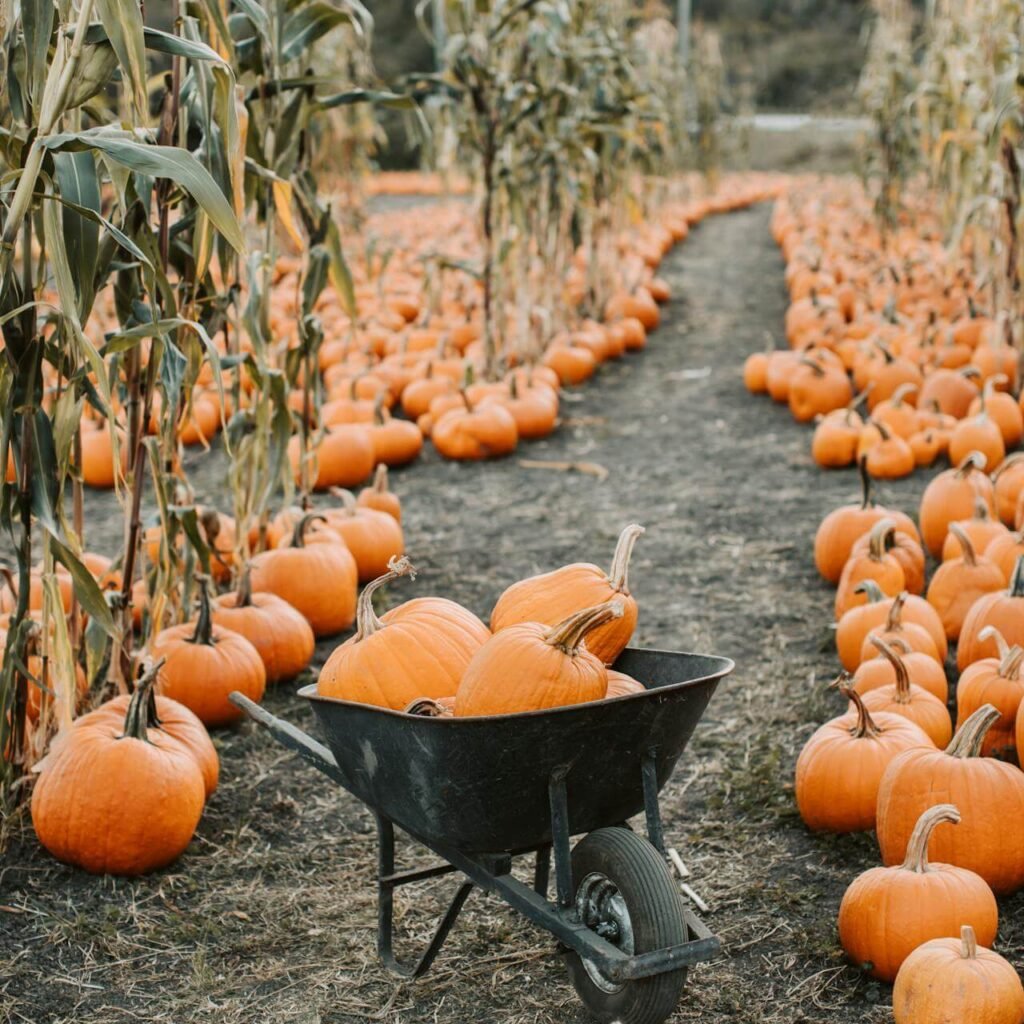
Living by the Wheel of the Year Today
You don’t need to live on a farm to benefit from the wheel of the year. Many modern people use this ancient system to organize their lives in healthier, more natural ways.
Some people plan their biggest projects during spring and summer when they have more energy. They save quieter activities like reading, planning, and reflection for autumn and winter. The wheel of the year helps them work with their natural rhythms instead of against them.
Students can use the wheel of the year to understand their own learning patterns. Some people focus better in the organized energy of autumn, while others do their best creative work during spring’s fresh energy.
The wheel of the year can also guide exercise and diet choices. Heavy, warming foods feel good during winter, while fresh fruits and salads are perfect for summer. Exercise might be more intense during active seasons and gentler during rest periods.
Many families create traditions around the wheel of the year that help children understand natural cycles. They might plant gardens in spring, have outdoor adventures in summer, go apple picking in autumn, and enjoy cozy indoor activities in winter.
Psychological Benefits of Following Natural Cycles
Mental health professionals are discovering that the wheel of the year offers important psychological benefits. Having a rhythm that matches natural cycles can reduce anxiety and depression.
The wheel of the year teaches us that difficult periods are temporary and necessary. Just as winter always leads to spring, hard times in our lives can lead to new growth and opportunities.
This system also provides regular opportunities for reflection and gratitude. Each season brings chances to think about our lives, appreciate what we have, and set new goals. This regular self-examination supports mental health and personal growth.
The wheel of the year connects us to something larger than ourselves. In our isolated modern world, feeling part of natural cycles can reduce loneliness and give us a sense of belonging to the earth and all life.
Many therapists now recommend seasonal activities and awareness as part of treatment for depression and anxiety. The wheel of the year provides a framework for this kind of nature-based healing.
Different Cultures, Same Patterns
While the wheel of the year comes from Celtic and Germanic traditions, similar patterns exist in cultures around the world. This suggests that seasonal awareness is a basic human need, not just an old European custom.
Chinese culture has a detailed system of seasonal energy that guides everything from medicine to cooking. Their calendar includes 24 micro-seasons that track subtle changes in weather, plant growth, and animal behavior.
Native American tribes across North America had their own versions of the wheel of the year. They held ceremonies for planting corn, celebrating the first salmon run, honoring the buffalo hunt, and preparing for winter.
Hindu traditions include festivals that follow seasonal patterns, like Diwali during the darkest time of year and Holi during spring’s arrival. These celebrations serve similar functions to the European wheel of the year.
Even modern Japanese culture maintains awareness of seasonal changes through customs like cherry blossom viewing in spring and moon viewing in autumn. The wheel of the year principle appears in many forms across different societies.
Create Your Personal Wheel of the Year Practice
You can start following the wheel of the year in simple ways that fit your modern lifestyle. Begin by just noticing seasonal changes around you. When do you first see spring flowers? When do leaves start changing color?
Keep a journal where you write about how different seasons make you feel. Do you sleep more in winter? Feel more social in summer? Understanding your personal patterns helps you work with the wheel of the year more effectively.
Try eating foods that match the seasons. Root vegetables and hearty soups in winter, fresh greens in spring, ripe fruits in summer, and apples and squash in autumn. This connects you to natural cycles through your daily meals.
Plan activities that match seasonal energy. The wheel of the year suggests starting new projects in spring, taking vacations in summer, organizing your life in autumn, and resting more in winter.
Create simple celebrations for each season change. Light candles during winter’s darkest days, plant something in spring, have outdoor meals in summer, and decorate with autumn leaves. The wheel of the year becomes more meaningful when you mark its passages.
Environmental Awareness Through Seasonal Living
Following the wheel of the year naturally leads to greater environmental awareness. When you pay attention to seasonal cycles, you become more conscious of how human activities affect natural patterns.
The wheel of the year teaches us to use resources according to natural availability. This might mean eating local foods that are in season, using less artificial lighting when days are naturally longer, or heating homes less when spring arrives.
Understanding seasonal patterns helps us make better environmental choices. The wheel of the year shows us when animals are most vulnerable during mating and nesting seasons, when plants need protection, and when ecosystems are most fragile.
Many people find that following the wheel of the year reduces their environmental impact naturally. They buy less stuff during winter’s restful period, grow their own food during active seasons, and generally live more in harmony with natural cycles.
This ancient system offers wisdom for dealing with modern environmental challenges. The wheel of the year teaches patience, gratitude for natural resources, and respect for the timing of natural processes.
Conclusion
The wheel of the year connects us to wisdom that humans have used for thousands of years. In our busy modern world, this ancient system offers a way to live more naturally and find deeper meaning in the passage of time.
Whether you follow the wheel of the year for spiritual reasons, health benefits, or environmental awareness, this system provides a framework for understanding life’s natural rhythms. It teaches us when to act and when to rest, when to celebrate and when to reflect.
Start small, notice the world around you, and let the wheel of the year guide you toward a more natural way of living. Ancient wisdom and modern life can work together to create a more meaningful and sustainable future.

